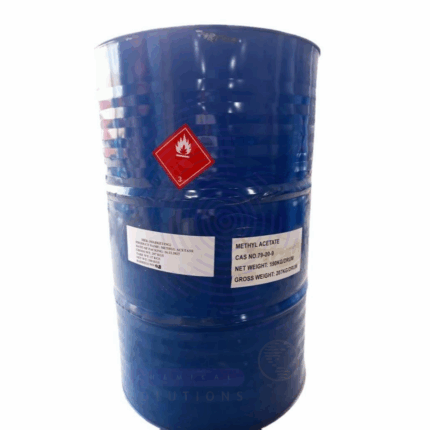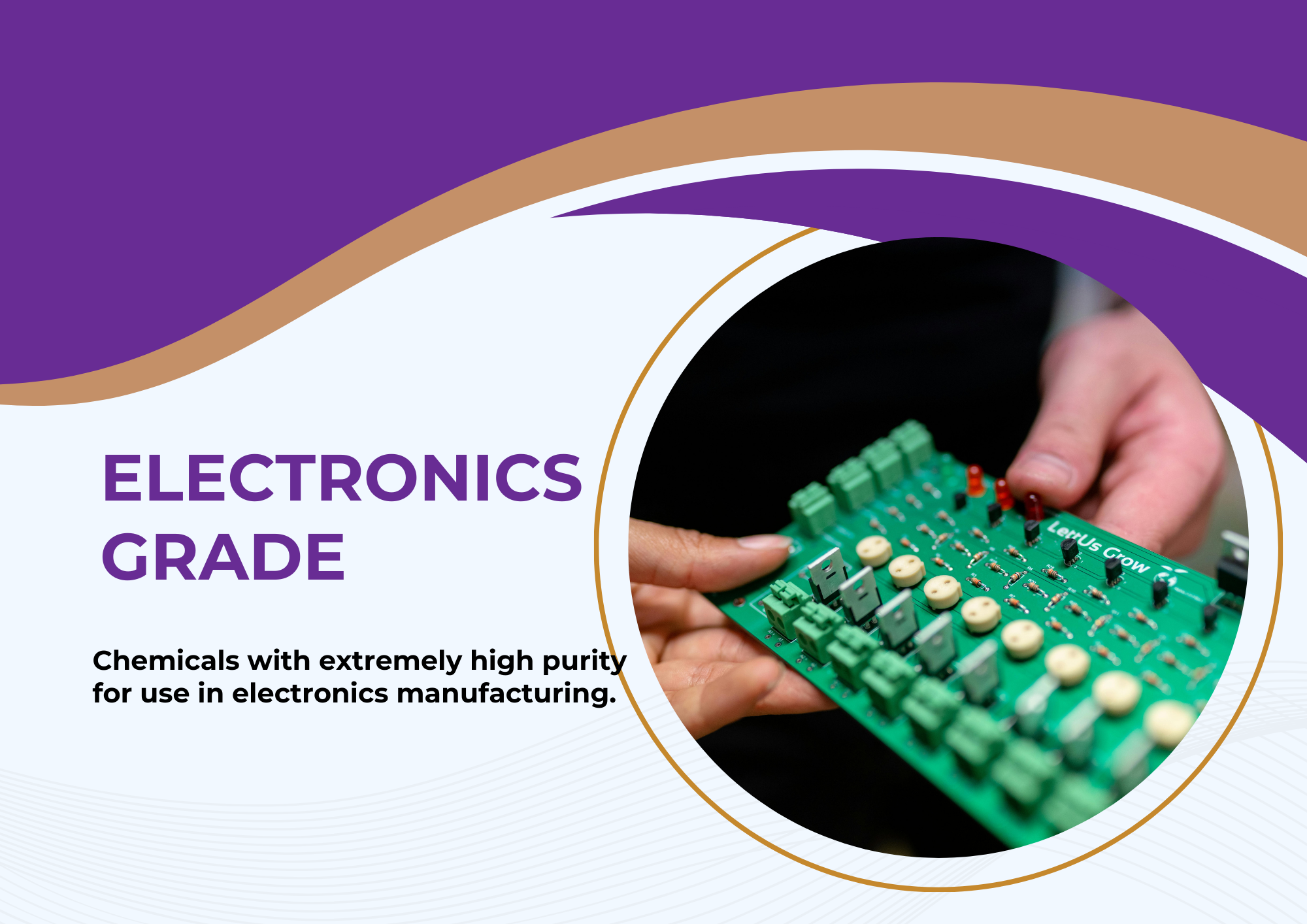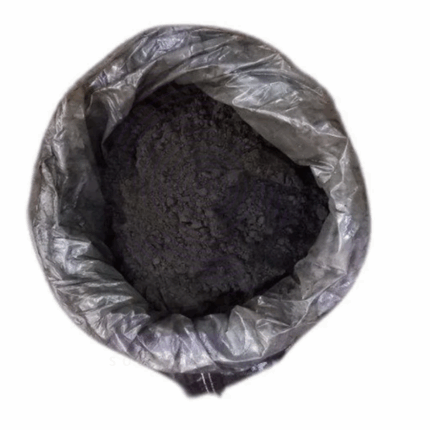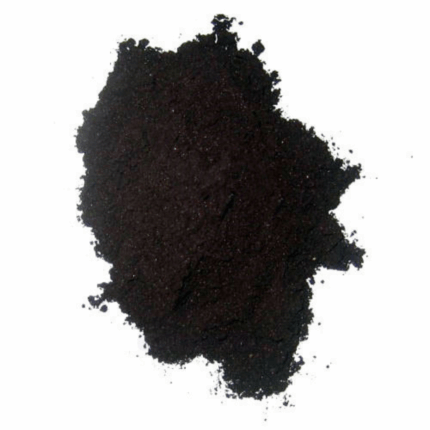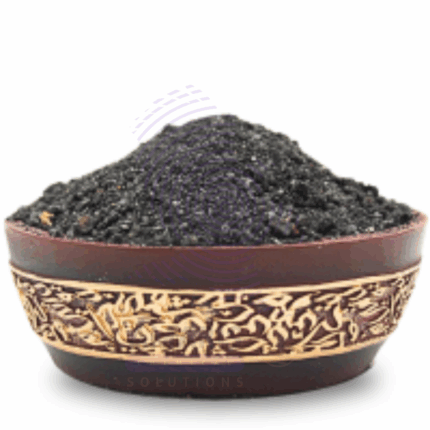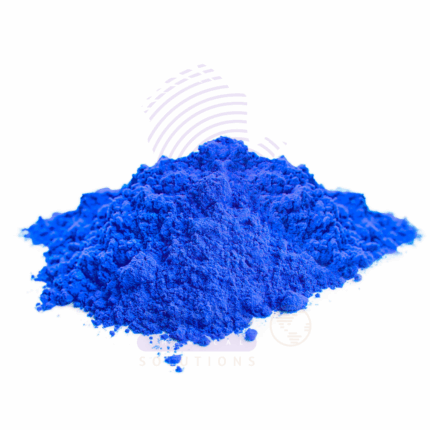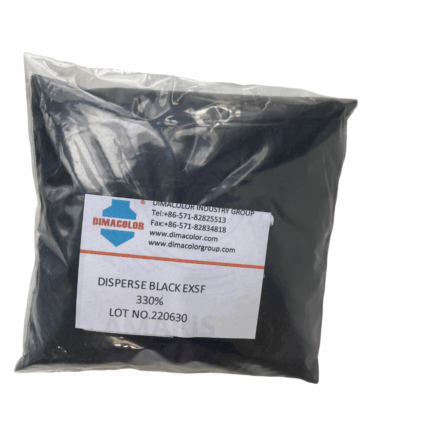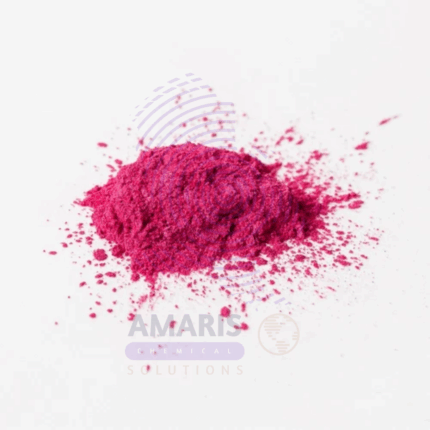Ethyl Glycol Acetate
Ethyl Glycol Acetate, also known as 2-Ethoxyethyl acetate, is a clear, colorless liquid solvent with a mild, sweet, and slightly fruity odor. It belongs to the family of glycol ethers and esters, combining excellent solvency power with moderate evaporation rates. This makes it highly suitable for use in coatings, inks, adhesives, and cleaning formulations where good solvency and controlled drying times are desired. Ethyl Glycol Acetate is compatible with a wide range of resins, including nitrocellulose, alkyd, acrylic, and vinyl resins, making it a versatile industrial solvent. Its balanced physical properties allow for efficient thinning, cleaning, and dissolution without rapid evaporation or harsh odors.
Ethyl Glycol Acetate Uses
Primary Uses
Coatings & Paints
- Used as a key solvent in automotive, industrial, and architectural coatings, varnishes, and lacquers to dissolve resins and improve film formation.
- Acts as a coalescing agent to promote uniform drying and gloss development.
- Enhances leveling and flow in paints, reducing surface defects such as brush marks and orange peel.
Adhesives & Sealants
- Employed as a solvent in various adhesive formulations including contact adhesives, pressure-sensitive adhesives, and sealants to optimize viscosity and bonding performance.
- Improves tack, drying time, and adhesion properties.
Printing Inks
- Functions as a solvent in solvent-based and some water-based printing inks, ensuring proper pigment dispersion and controlled drying rate.
- Provides good gloss and flow characteristics essential for high-quality print finishes.
Cleaning Products
- Utilized as a solvent and degreaser in industrial cleaning formulations for metals, electronics, and precision instruments.
- Effective in removing oils, greases, and other contaminants without aggressive evaporation or residue.
Chemical Intermediate & Extraction
- Serves as an intermediate solvent in chemical synthesis processes.
- Used in extraction and purification operations where selective solubility and mild evaporation are needed.
Pharmaceuticals & Cosmetics
- Occasionally incorporated as a solvent or carrier in pharmaceutical preparations and cosmetic products such as nail polish removers, fragrances, and topical formulations, subject to regulatory compliance.
Secondary Uses
Textile Industry
- Used in dyeing and finishing operations as a solvent and carrier for textile chemicals.
Electronics
- Applied in the manufacture and cleaning of electronic components due to its moderate evaporation and low residue.
Agriculture
Employed as a solvent in pesticide and herbicide formulations for effective delivery and compatibility.
Basic Identification Attributes
- Chemical Name (IUPAC): 2-Ethoxyethyl acetate
- Common/Trade Name: Ethyl Glycol Acetate
- CAS Number: 111-15-9
- HS Code: 2915.39.90
- Molecular Formula: C6H12O3
- Synonyms: Ethylene glycol monoethyl ether acetate, EGA, 2-EEA
Physical & Chemical Properties
- Physical State: Clear, colorless liquid
- Odor: Mild, sweet, fruity odor
- Boiling Point: Approximately 135°C
- Melting Point: -54°C
- Density: 0.95 g/cm³ at 20°C
- Flash Point: 55°C (closed cup)
- Vapor Pressure: 1.7 mmHg at 20°C
- Solubility: Slightly soluble in water (~7 g/100 mL); miscible with most organic solvents such as alcohols, ketones, and esters
- Evaporation Rate: Moderate (slower than acetates like ethyl acetate)
- Vapor Density: >3 (heavier than air)
- Stability: Chemically stable under normal conditions; avoid strong oxidizing agents, acids, and bases
Safety & Hazard Attributes
- Hazard Class (GHS): Flammable liquid — Category 3
- Toxicity: Low acute toxicity; exposure may cause mild irritation to skin, eyes, and respiratory tract
- Exposure Limits: OSHA PEL – 50 ppm (8-hour TWA); ACGIH TLV – 20 ppm
- Flammability: Flammable liquid and vapor; vapors may form explosive mixtures with air
Storage & Handling Attributes
- Storage Conditions: Store in a cool, dry, well-ventilated place away from heat, sparks, open flames, and other ignition sources
- Container Type: Metal drums, tightly sealed and protected from contamination
- Shelf Life: 1 to 2 years if stored properly in original sealed containers
- Handling Precautions: Use grounding and bonding during transfer to prevent static discharge; avoid inhalation and skin contact; ensure adequate ventilation
Regulatory & Compliance Attributes
- FDA Status: Not generally used as a food or pharmaceutical ingredient; subject to regulatory approval for specific applications
- REACH Registration: Registered for industrial use in the EU
- VOC Regulations: Classified as a volatile organic compound (VOC) under most environmental regulations; usage may be restricted in certain areas
- Restrictions: Handle according to flammable liquids guidelines and workplace safety regulations
Environmental & Health Impact
- Biodegradability: Readily biodegradable under aerobic conditions
- Ecotoxicity: Moderate toxicity to aquatic organisms; avoid uncontrolled release to the environment
- Bioaccumulation: Low potential for bioaccumulation
Carcinogenicity/Mutagenicity: Not classified as carcinogenic or mutagenic by major health agencies
Safety Handling Precautions
PPE Required:
- Chemical-resistant gloves (nitrile, neoprene)
- Safety goggles or face shield
- Protective clothing or lab coat
- Respiratory protection (approved organic vapor respirator) when ventilation is inadequate
Handling Guidelines:
- Use in well-ventilated areas or under fume extraction
- Avoid skin and eye contact
- Prevent vapor accumulation; eliminate ignition sources
- Handle containers carefully to avoid spills and leaks
Storage Measures:
- Keep containers tightly closed when not in use
- Store away from incompatible materials such as strong acids, bases, and oxidizers
- Avoid exposure to heat and direct sunlight
- Implement spill containment measures
Hygiene Practices:
- Wash hands and exposed skin thoroughly after handling
- Do not eat, drink, or smoke in work areas
- Maintain clean equipment and work surfaces to prevent contamination
First Aid Measures
- Inhalation: Move affected person to fresh air immediately; if breathing difficulties or irritation persist, seek medical attention
- Skin Contact: Wash affected area with soap and water; remove contaminated clothing; seek medical advice if irritation develops or persists
- Eye Contact: Rinse eyes thoroughly with clean water for at least 15 minutes; consult a physician if irritation or redness continues
- Ingestion: Rinse mouth with water; do not induce vomiting unless directed by medical personnel; seek immediate medical attention in case of large ingestion
Firefighting Measures
- Fire Hazards: Flammable liquid and vapor; vapors may form explosive mixtures with air and travel to ignition sources
- Extinguishing Media: Use foam, dry chemical powder, carbon dioxide (CO₂), or water spray
- Special Precautions: Firefighters should wear full protective gear and self-contained breathing apparatus (SCBA)
- Decomposition Products: Carbon monoxide, carbon dioxide, acetic acid, and toxic fumes may be produced during combustion


 Preservatives(food)
Preservatives(food) Flavor Enhancers
Flavor Enhancers Acidulants
Acidulants Sweeteners
Sweeteners Antioxidants
Antioxidants Colorants(food)
Colorants(food) Nutraceutical Ingredients (food)
Nutraceutical Ingredients (food) Nutrient Supplements
Nutrient Supplements Emulsifiers
Emulsifiers
 Collectors
Collectors Dust Suppressants
Dust Suppressants Explosives and Blasting Agents
Explosives and Blasting Agents Flocculants and Coagulants
Flocculants and Coagulants Frothers
Frothers Leaching Agents
Leaching Agents pH Modifiers
pH Modifiers Precious Metal Extraction Agents
Precious Metal Extraction Agents
 Antioxidants(plastic)
Antioxidants(plastic) Colorants (Pigments, Dyes)
Colorants (Pigments, Dyes) Fillers and Reinforcements
Fillers and Reinforcements Flame Retardants
Flame Retardants Monomers
Monomers Plasticizers
Plasticizers Polymerization Initiators
Polymerization Initiators Stabilizers (UV, Heat)
Stabilizers (UV, Heat)
 Antifoaming Agents
Antifoaming Agents Chelating Agents
Chelating Agents Coagulants and Flocculants
Coagulants and Flocculants Corrosion Inhibitors
Corrosion Inhibitors Disinfectants and Biocides
Disinfectants and Biocides Oxidizing Agents
Oxidizing Agents pH Adjusters
pH Adjusters Scale Inhibitors( water)
Scale Inhibitors( water)
 Antioxidants(cosmetic)
Antioxidants(cosmetic) Emollients
Emollients Fragrances and Essential Oils
Fragrances and Essential Oils Humectants
Humectants Preservatives
Preservatives Surfactants(cosmetic)
Surfactants(cosmetic) Thickeners
Thickeners UV Filters
UV Filters
 Fertilizers
Fertilizers Soil Conditioners
Soil Conditioners Plant Growth Regulators
Plant Growth Regulators Animal Feed Additives
Animal Feed Additives Biostimulants
Biostimulants Pesticides (Herbicides, Insecticides, Fungicides)
Pesticides (Herbicides, Insecticides, Fungicides)
 Active Pharmaceutical Ingredients (APIs)
Active Pharmaceutical Ingredients (APIs) Excipients
Excipients Solvents(pharmaceutical)
Solvents(pharmaceutical) Antibiotics
Antibiotics Antiseptics and Disinfectants
Antiseptics and Disinfectants Vaccine Adjuvants
Vaccine Adjuvants Nutraceutical Ingredients (pharmaceutical)
Nutraceutical Ingredients (pharmaceutical) Analgesics & Antipyretics
Analgesics & Antipyretics
 Analytical Reagents
Analytical Reagents Solvents(lab)
Solvents(lab) Chromatography Chemicals
Chromatography Chemicals Spectroscopy Reagents
Spectroscopy Reagents microbiology-and-cell-culture-reagents
microbiology-and-cell-culture-reagents Molecular Biology Reagents
Molecular Biology Reagents Biochemical Reagents
Biochemical Reagents Inorganic and Organic Standards
Inorganic and Organic Standards Laboratory Safety Chemicals
Laboratory Safety Chemicals Specialty Laboratory Chemicals(Special Laboratory Equipment)
Specialty Laboratory Chemicals(Special Laboratory Equipment)
 Demulsifiers
Demulsifiers Hydraulic Fracturing Fluids
Hydraulic Fracturing Fluids Scale Inhibitors(oil)
Scale Inhibitors(oil) Surfactants(oil)
Surfactants(oil) Drilling Fluids
Drilling Fluids
 Dyes and Pigments
Dyes and Pigments Bleaching Agents
Bleaching Agents Softening Agents
Softening Agents Finishing Agents
Finishing Agents Antistatic Agents
Antistatic Agents
 Admixtures
Admixtures Waterproofing Agents
Waterproofing Agents Sealants and Adhesives
Sealants and Adhesives Curing Compounds
Curing Compounds Concrete Repair Chemicals
Concrete Repair Chemicals Anti-Corrosion Coatings
Anti-Corrosion Coatings
 Surfactants(cleaning)
Surfactants(cleaning) Builders
Builders Enzymes
Enzymes Solvents (Cleaning)
Solvents (Cleaning) Fragrances
Fragrances
 Electronic Chemicals
Electronic Chemicals Catalysts
Catalysts Lubricants
Lubricants Photographic Chemicals
Photographic Chemicals Refrigerants
Refrigerants Automotive chemicals
Automotive chemicals Pyrotechnic Chemicals
Pyrotechnic Chemicals
 Biodegradable Surfactants
Biodegradable Surfactants Bio-based Solvents
Bio-based Solvents Renewable Polymers
Renewable Polymers Carbon Capture Chemicals
Carbon Capture Chemicals Wastewater Treatment Chemicals
Wastewater Treatment Chemicals
 Pigments
Pigments Solvents(paint)
Solvents(paint) Specialty Coatings
Specialty Coatings Binders/Resins
Binders/Resins Additives
Additives Driers
Driers Anti-Corrosion Agents
Anti-Corrosion Agents Functional Coatings
Functional Coatings Application-Specific Coatings
Application-Specific Coatings
 Fresh Herbs
Fresh Herbs Ground Spices
Ground Spices Whole Spices
Whole Spices Spice Blends
Spice Blends Dried Herbs
Dried Herbs
 Leavening Agents
Leavening Agents Dough Conditioners
Dough Conditioners Flour Treatments
Flour Treatments Fat Replacers
Fat Replacers Decoratives
Decoratives Preservatives(baking)
Preservatives(baking)
 Plasticizers & Softeners
Plasticizers & Softeners Reinforcing Agents
Reinforcing Agents Adhesion Promoters
Adhesion Promoters Vulcanizing Agents
Vulcanizing Agents Antidegradants
Antidegradants Blowing Agents
Blowing Agents Fillers & Extenders
Fillers & Extenders Accelerators & Retarders
Accelerators & Retarders
